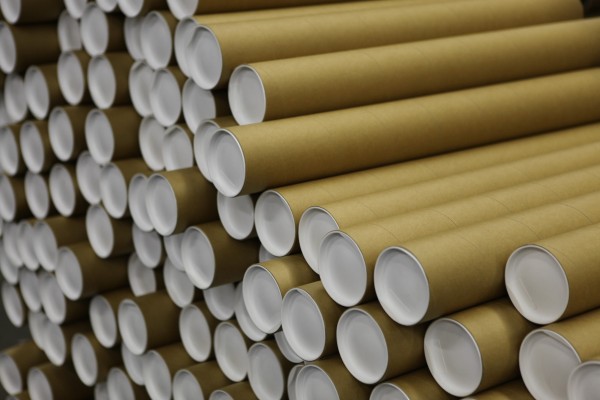
Let’s assume you’re just starting your poster company and that you are the one who will be purchasing the supplies, packing everything, and shipping the posters yourself. And keep in mind that “poster tubes” is just another name for “mailing tubes”, “shipping tubes”, “cardboard tubes”, and “paper tubes.” Referring to a “paper tube” as a “poster tube” is just a more specific way of referring to it.
How not to ship posters
Envelopes. Padded or not, envelopes are the worst way to ship posters. When posters are shipped, they need to be rolled – packaging a perfectly good rolled poster in an envelope, that will undoubtedly be smashed during shipping, is asking for a problem.
Plastic bags. We often speak with customers who ask if they can simply roll their poster and insert it in a long plastic bag, to avoid additional shipping weight. No. Plastic bags, although lightweight, have no structural integrity and do not provide any sort of protection during shipping.
Cardboard boxes. Cardboard boxes would be better than envelopes and plastic bags because they would provide protection and safety during shipping, but cardboard boxes are expensive. Because they are meant to withstand significant amounts of weight and handling during transit, corrugated boxes are overkill when it comes to shipping posters, and the cost proves it.
How to ship posters?
Poster tubes. Round poster tubes are strong and cost effective. Made out of spirally wound paper, like a strand of never-ending DNA, poster tubes protect posters from damage during shipping and ensure it will arrive safely at its destination. The size of your poster will determine what size poster tube is best. A standard 11″ x 17″ poster would fit perfectly in a 2″ diameter tube. Larger posters ship better inside poster tubes with larger diameters. If you are shipping multiple posters in one tube, it’s best to use a larger diameter and a thicker wall.
The two most popular types of poster tubes are 1) poster tubes with plastic end plugs and 2) crimped ends (aka “snap seal”).
Poster tubes that use plastic end plugs are structurally similar to crimped end poster tubes except that a plastic plug must be inserted into each end – reducing the inside, usable space of the tube. We always suggest using tape to secure the plastic end plugs in place. Although they are friction-fit end plugs, they can pop off or fall out if not secured. Crimped end poster tubes do not require plastic end plugs but, instead, are folded, or “crimped” at the ends – this locks the poster inside the tube.
Plastic end plugs are lightweight and will not increase shipping costs too much. Crimped end poster tubes are made a little longer than usual, to ensure there is enough inside, usable space. Both types of poster tubes are effective and are selected by preference more than anything else.

